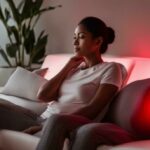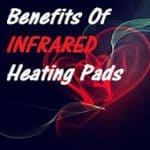Last Updated on 12 months by Francis
Depression is a common mental health condition that affects millions of people worldwide. It can cause feelings of sadness, hopelessness, and fatigue, among other symptoms. While there are many different treatments available for depression, including therapy and medication, some people are turning to light therapy as an alternative option. In this article, we will explore the effectiveness of light therapy in treating depression and discuss the potential benefits and drawbacks of this treatment option.
Light therapy is a form of treatment that involves exposure to bright light to alleviate symptoms of depression. This therapy is typically used as a first-line treatment for Seasonal Affective Disorder (SAD), a type of depression that occurs in the winter months when there is less natural sunlight. However, the efficacy of light therapy for other forms of depression is still being researched and debated. In this discussion, we will explore the question: does light therapy help depression?
Contents
Understanding Light Therapy
Light therapy, also known as phototherapy, is a form of treatment that involves exposure to specific wavelengths of light. This type of therapy is often used to treat seasonal affective disorder (SAD), a type of depression that occurs during the winter months when there is less natural sunlight. However, light therapy can also be used to treat other types of depression, including major depressive disorder and bipolar disorder.
How Does Light Therapy Work?
Light therapy works by stimulating the production of serotonin, a neurotransmitter that plays a critical role in regulating mood. Serotonin levels tend to be lower in people with depression, which is why increasing serotonin production can help alleviate symptoms. Light therapy devices emit bright white light that mimics natural sunlight, which can stimulate serotonin production in the brain.
Types of Light Therapy Devices
There are several different types of light therapy devices available, including light boxes, dawn simulators, and light visors. Light boxes are the most common type of light therapy device and emit bright light from fluorescent bulbs. Dawn simulators are designed to simulate a sunrise, gradually increasing in brightness over a set period of time. Light visors are worn on the head and direct light towards the eyes, similar to a headlamp.
Effectiveness of Light Therapy for Depression
While there is some evidence to suggest that light therapy can be an effective treatment for depression, the research is still relatively limited. Some studies have found that light therapy can be as effective as antidepressant medication in treating depression, while others have found that it may be less effective.
Benefits of Light Therapy for Depression
One of the biggest benefits of light therapy is that it is a non-invasive treatment option that does not require medication. Additionally, it is generally considered to be safe and does not have many side effects. Light therapy can also be less expensive than other forms of treatment, such as therapy or medication.
Drawbacks of Light Therapy for Depression
While light therapy is generally considered safe, it is not without its drawbacks. One of the biggest drawbacks is that it can be time-consuming, with sessions typically lasting between 20-30 minutes per day. Additionally, not all light therapy devices are created equal, and some may not be effective for treating depression. It is also important to note that light therapy may not be effective for everyone and should not be used as a substitute for other treatments, such as therapy or medication.
How to Use Light Therapy for Depression
If you are interested in trying light therapy for depression, it is important to use a high-quality light therapy device that emits at least 10,000 lux. Lux is a measure of light intensity, with 10,000 lux being the minimum amount of light required for effective treatment. Light therapy devices can be purchased online or through a healthcare provider.
It is recommended to use light therapy for 20-30 minutes per day, preferably in the morning. It is important to sit close to the light therapy device, with the light directed towards your face, but not directly into your eyes. It is also important to keep your eyes open while using the device, as closing your eyes can decrease the effectiveness of the treatment.
Key takeaway: Light therapy can be an effective treatment option for depression, but it is important to use a high-quality light therapy device that emits at least 10,000 lux and to consult with a healthcare provider before use. While light therapy is generally safe, it can have mild side effects, such as headaches and eye strain.







